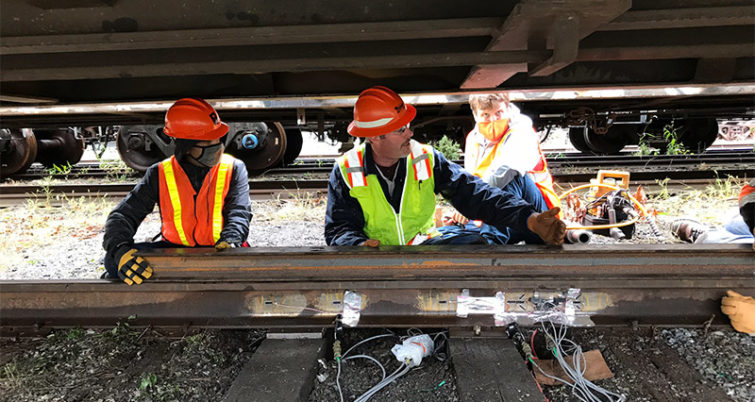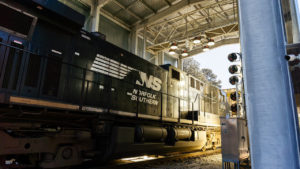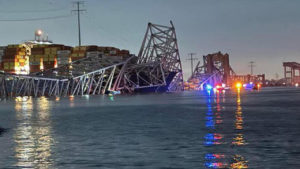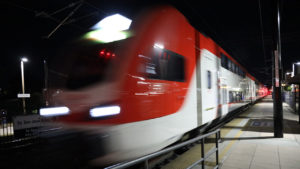OSU Researchers work with ENSCO, Inc. to Develop Railroad Track Monitoring Methods
Written by Jennifer McLawhorn, Managing Editor
STILLWATER, Okla. – Oklahoma State University researchers have worked with ENSCO, Inc. and the FRA since 2019 “toward developing state-of-the-art railroad track monitoring methods using advanced sensor technologies.”
Oklahoma State University researchers have worked with ENSCO, Inc. and the FRA since 2019 “toward developing state-of-the-art railroad track monitoring methods using advanced sensor technologies.”
Associate Professor Dr. Deb Mishra from the School of Civil and Environmental Engineering told OSU News: “Recent advancements in sensor technologies equip railroad infrastructure researchers with unique capabilities to leverage century-old civil engineering principles for carrying out real time track performance monitoring.”
Dr. Mishra and his students are currently working “with conventional sensors as well as advanced fiber-optic technologies to facilitate real-time track condition monitoring.” On September 16th, they published a paper in “Transportation Research Record: Journal of the Transportation Research Board” titled “Response of Strain-Gauge-Based Tie Reaction Measurement Circuits under Dynamic Loading and Variable Support Conditions.”
This paper details the “findings from a field instrumentation campaign carried out in a railroad yard in Chambersburg, Pennsylvania.” Ph.D. candidate, Fazle Rabbi, said “there are certain critical spots such as bridge approaches, grade crossings, etc. where the track geometry degradation rate is significantly higher compared to other locations. . . Such locations, if left unmonitored, can pose severe safety concerns.”
Dr. Mishra and Rabbi worked with ENSCO, Inc. researchers to “measure support conditions underneath crossties under static as well as dynamic loading. Utilizing a concept known as differential shear strain (DSS), this approach is capable of measuring the train induced wheel loads as well as tie support reactions with excellent accuracy.”
According to the report, the study “showed that the strain gauge-based measurement approach is as accurate as other conventional tie reaction force measurement methods, [but] installation of conventional sensors can be invasive, where the system used by Mishra and Rabbi is easy to install, saving railroad agencies significant time and track closure.”





